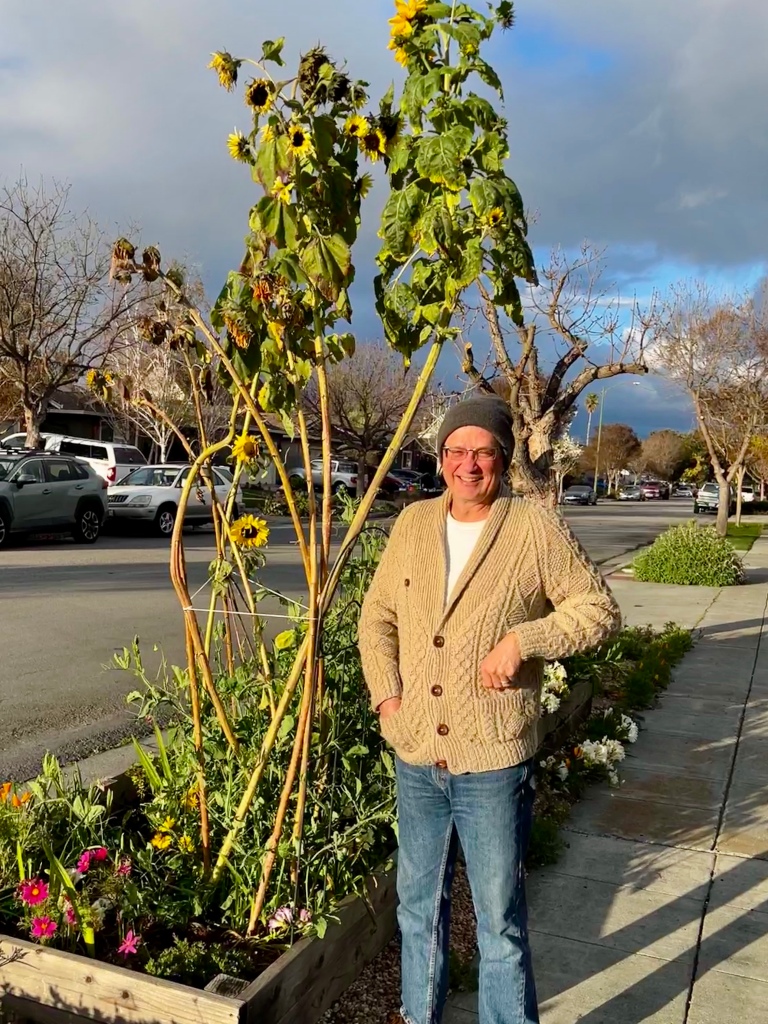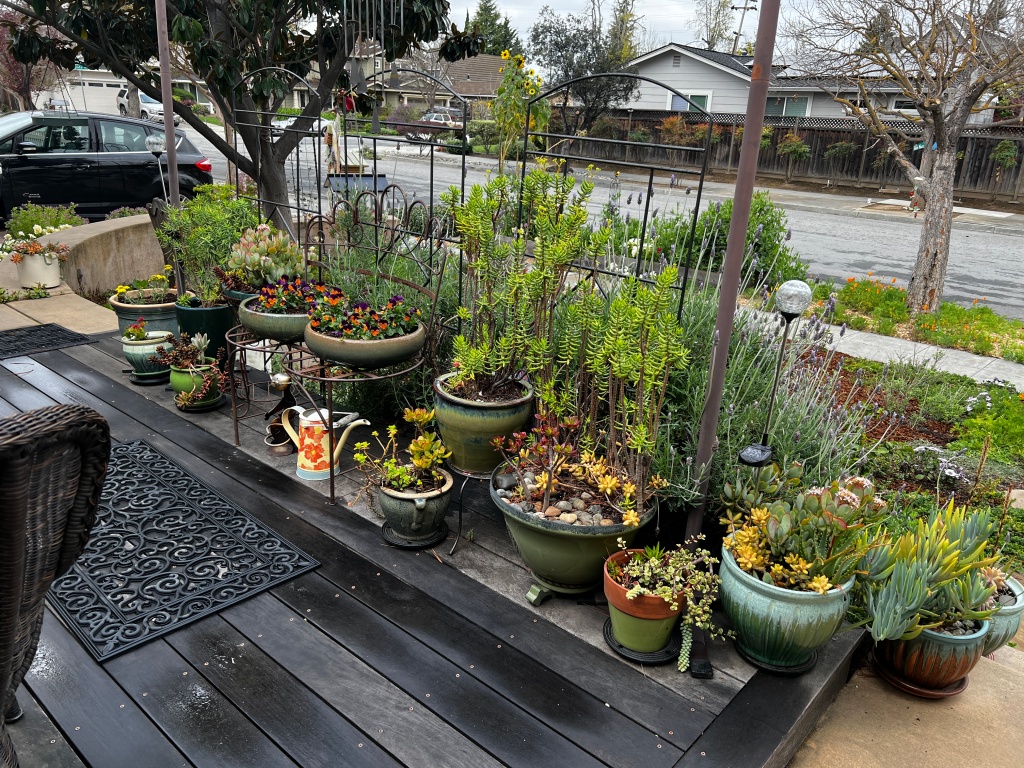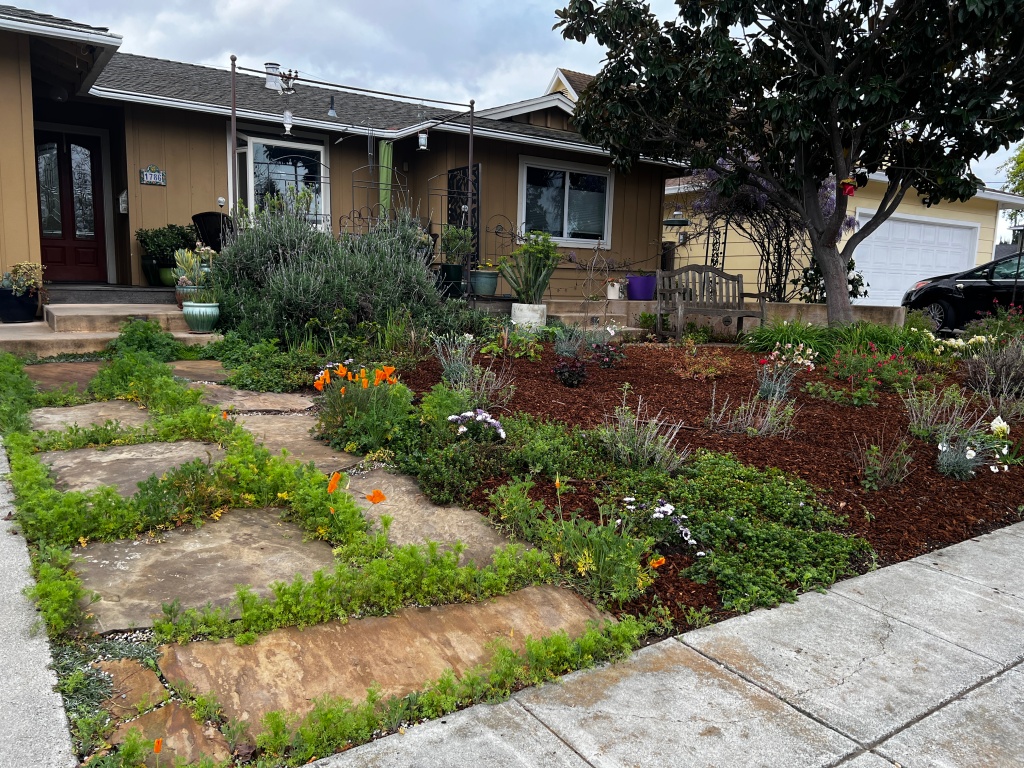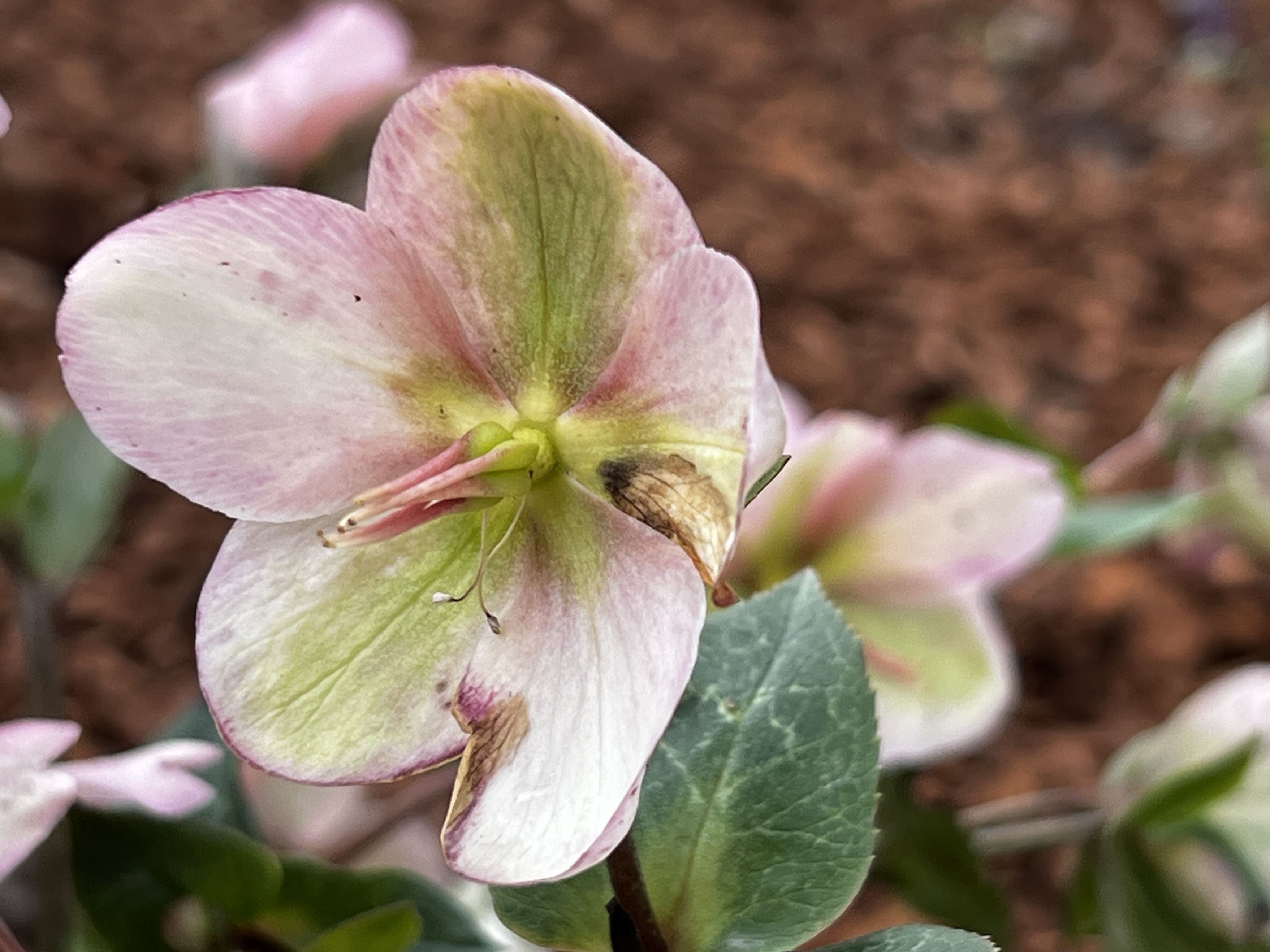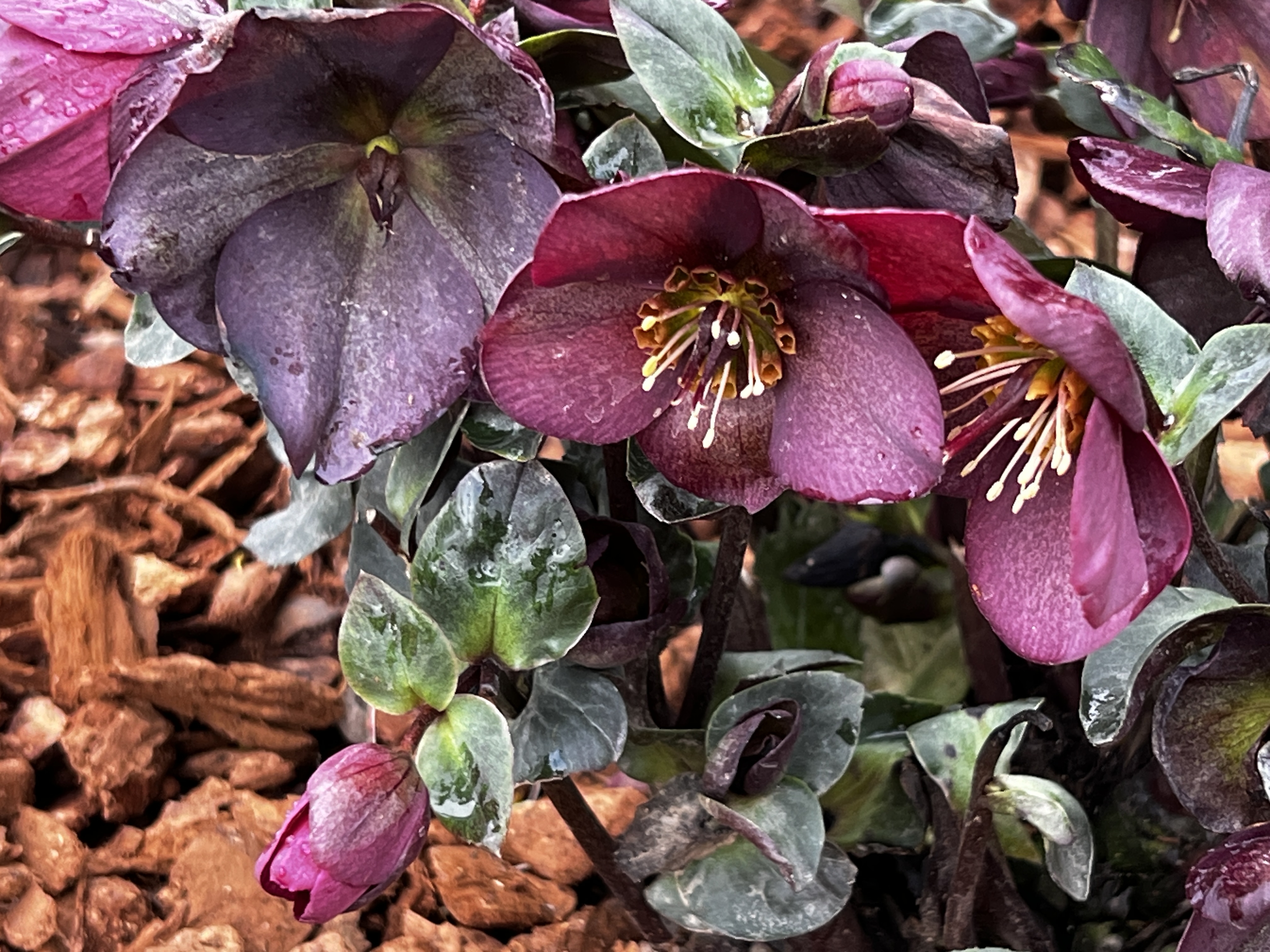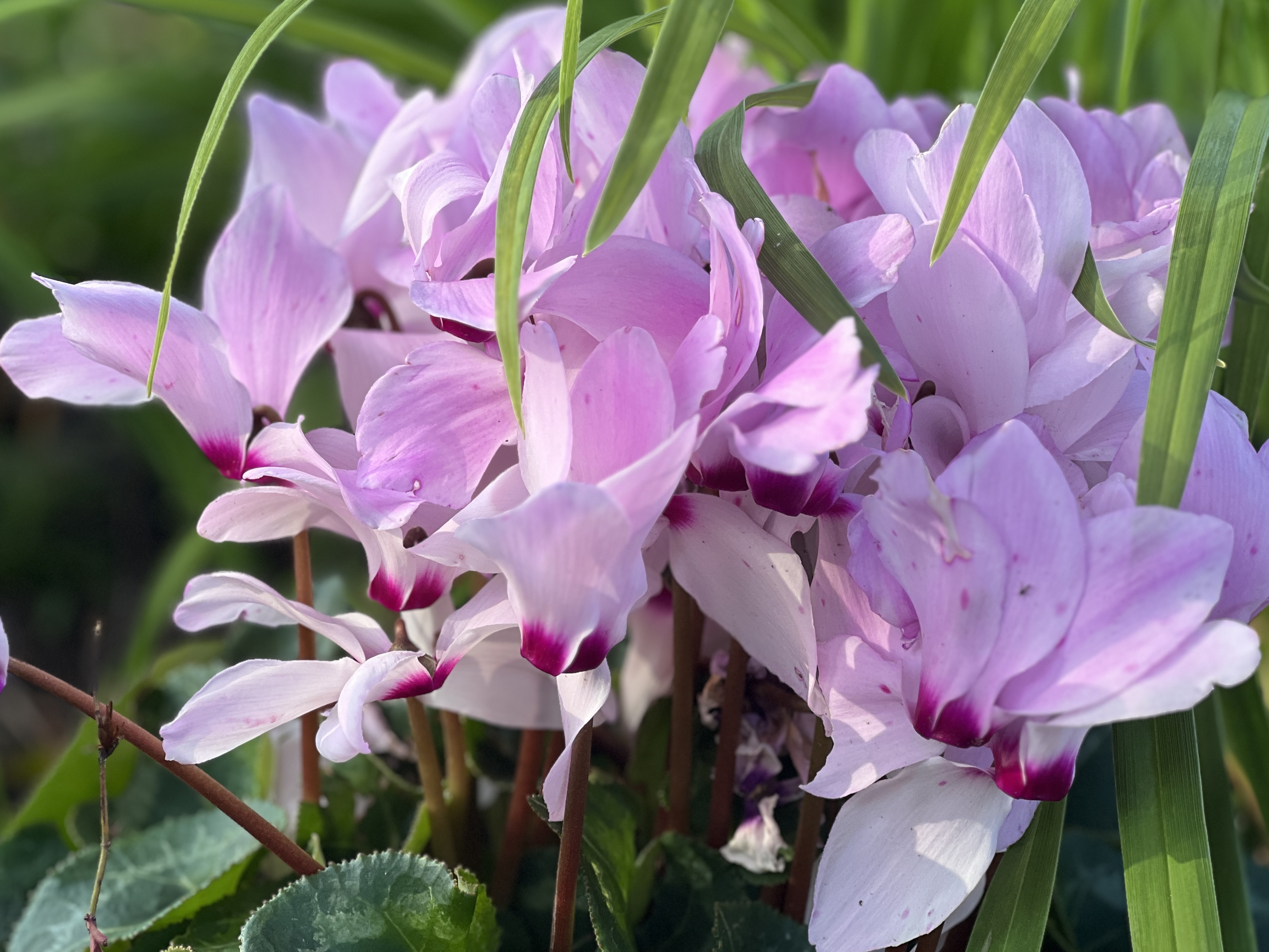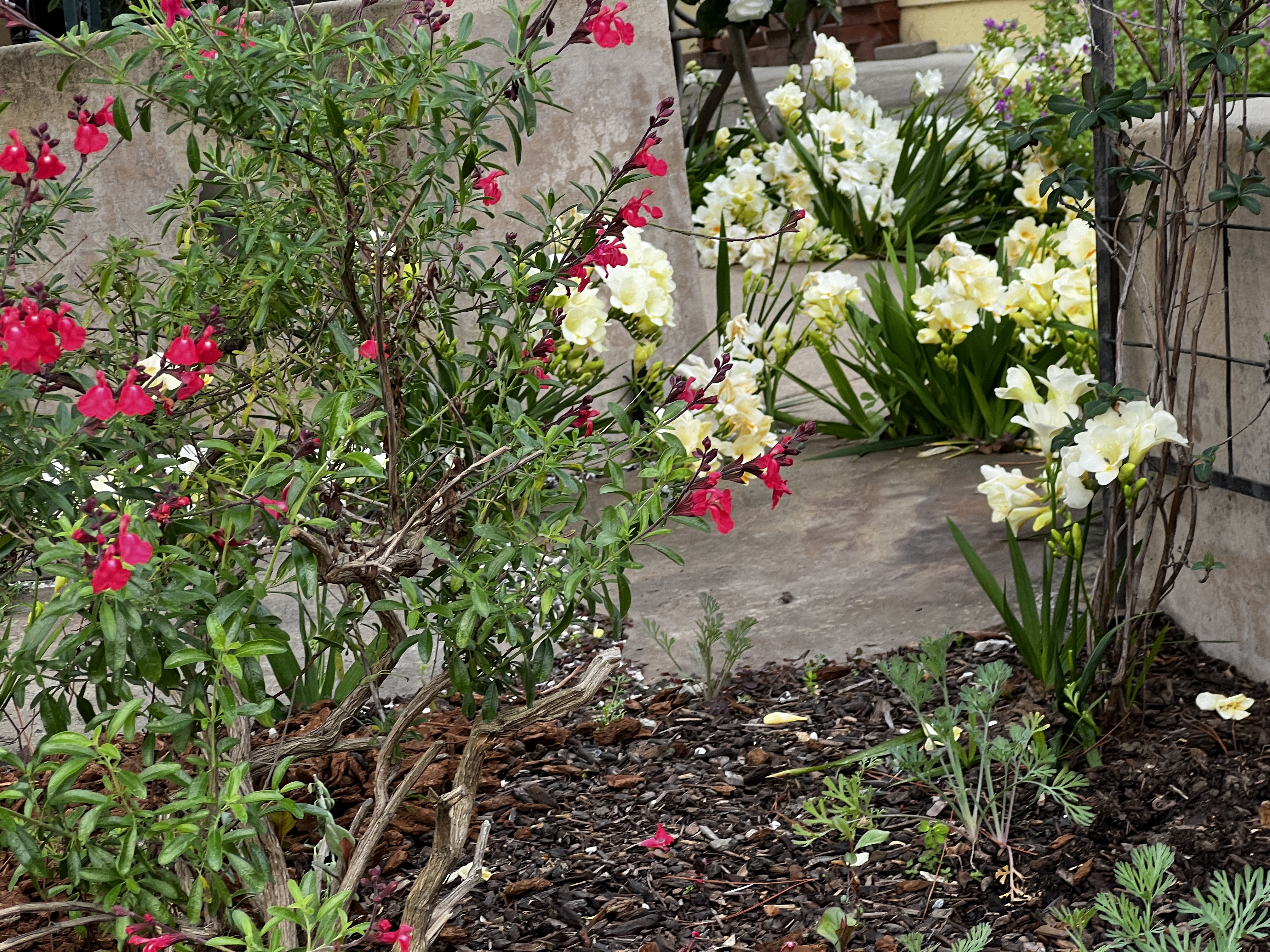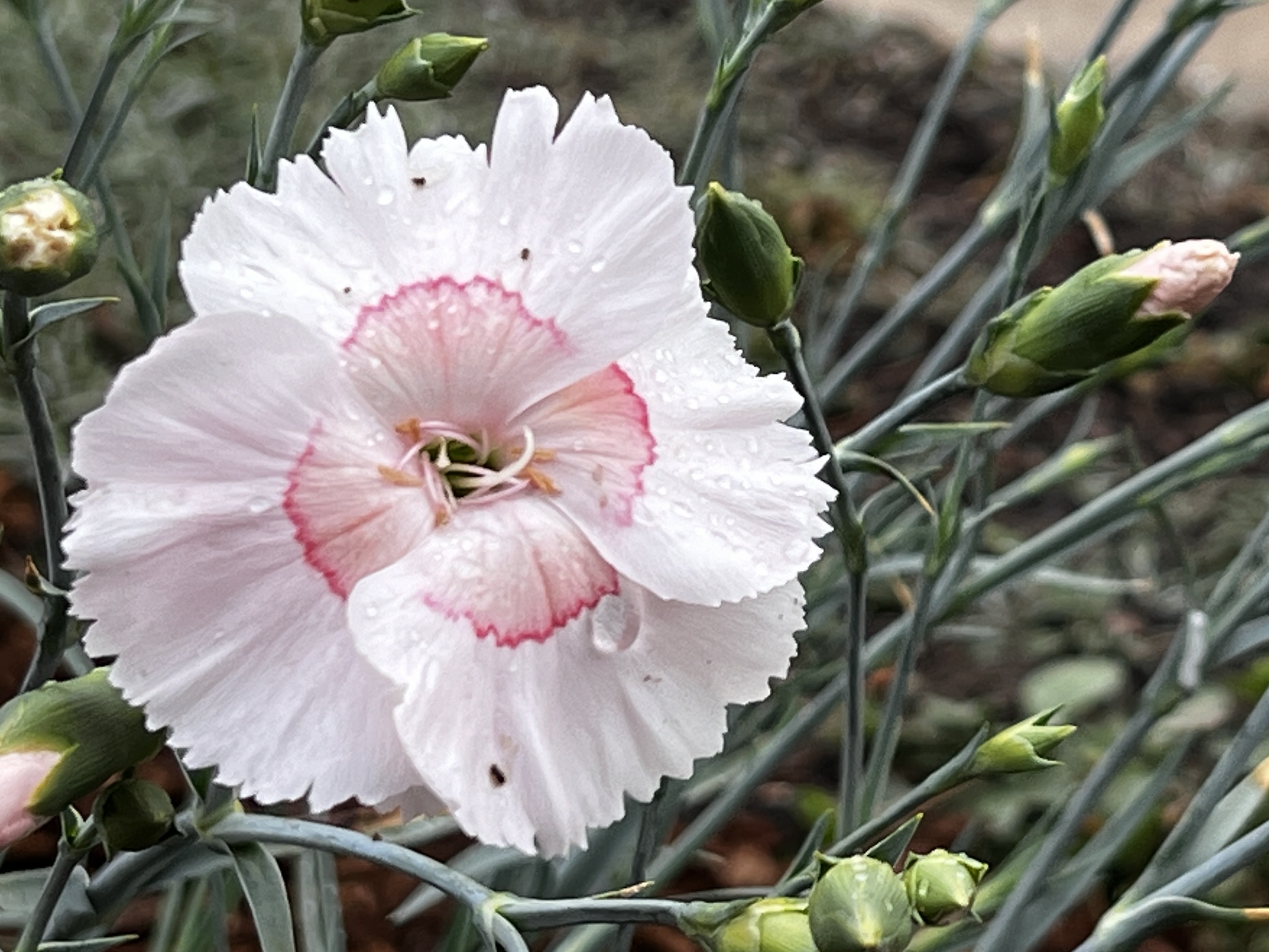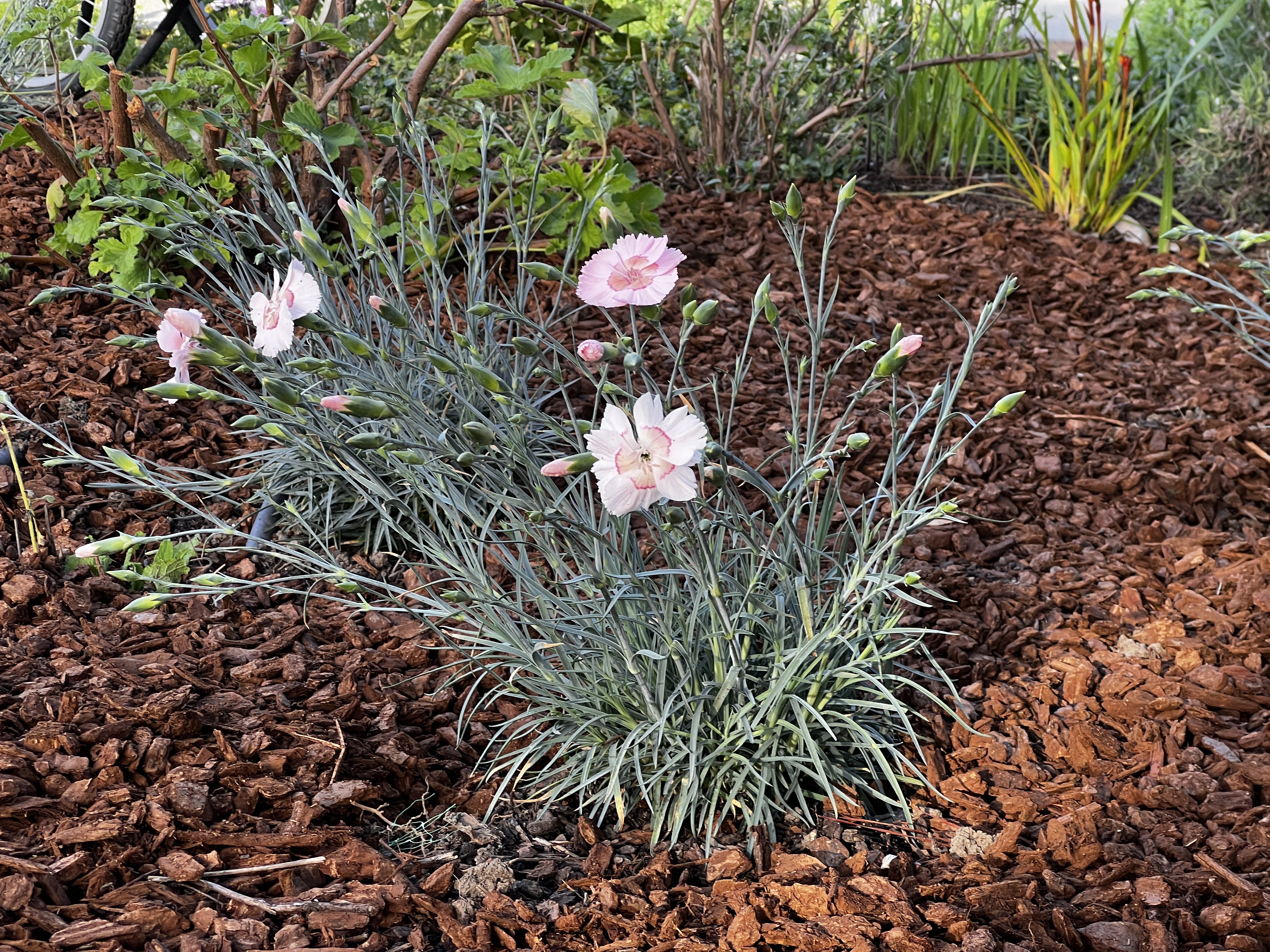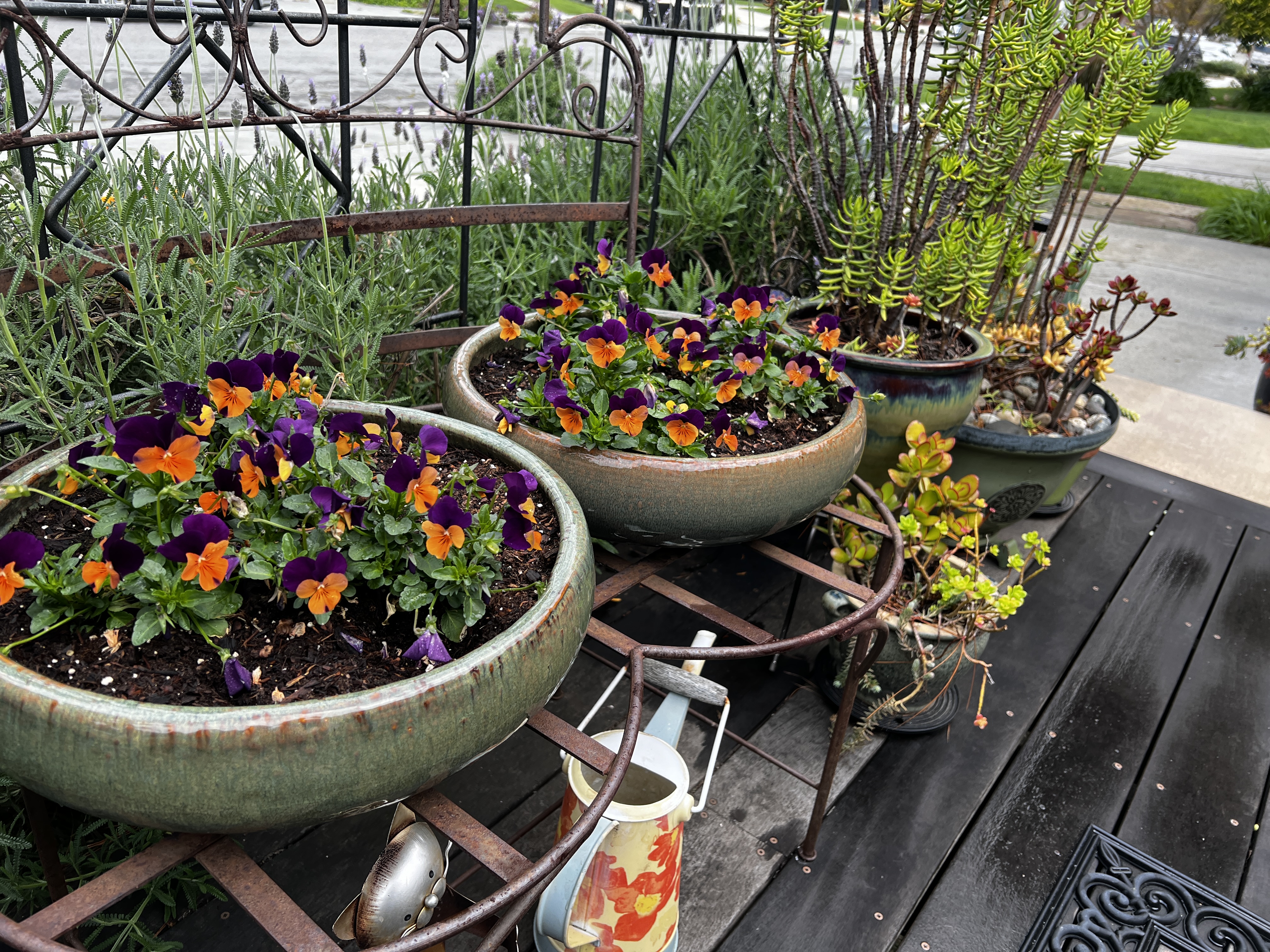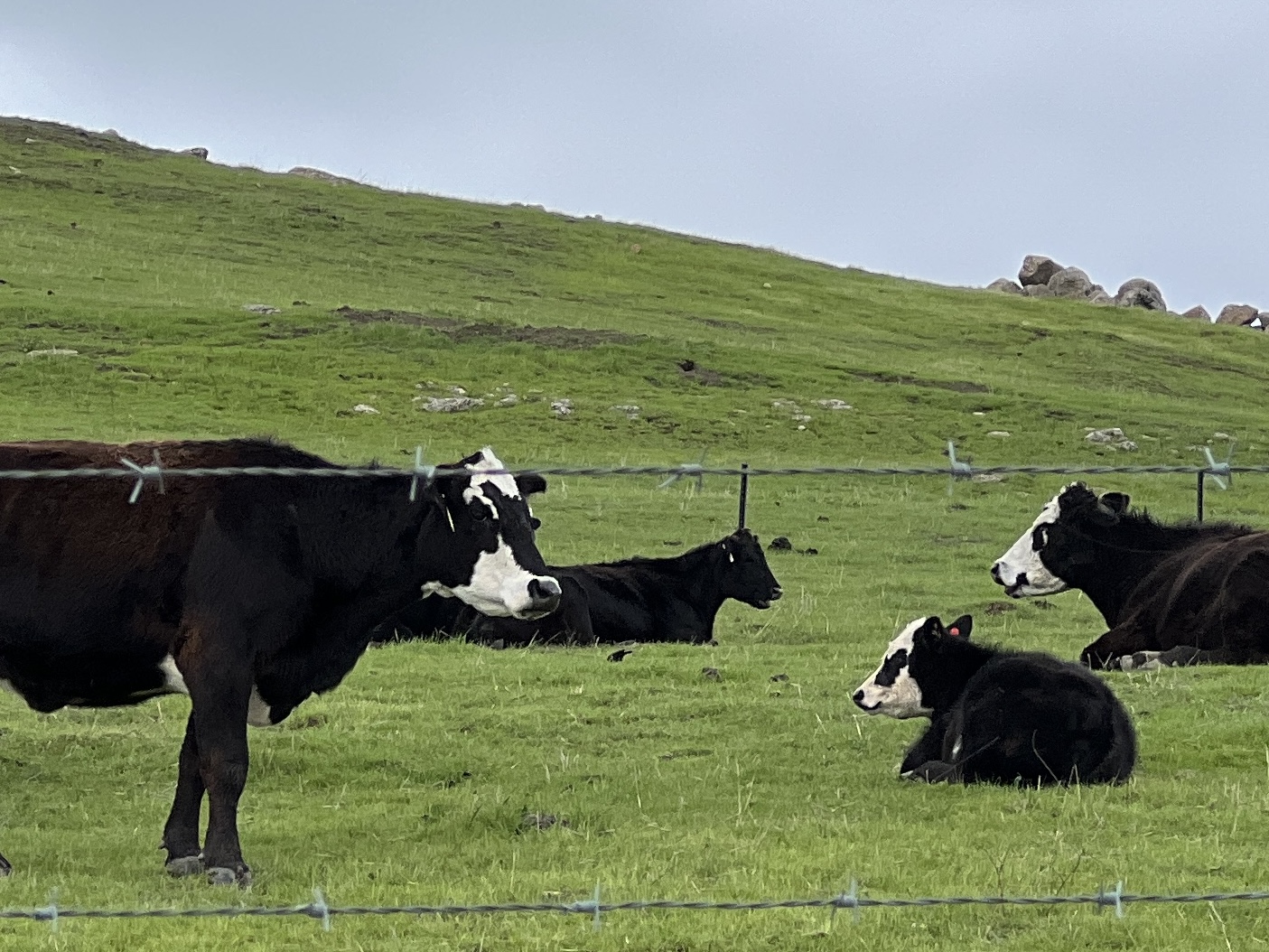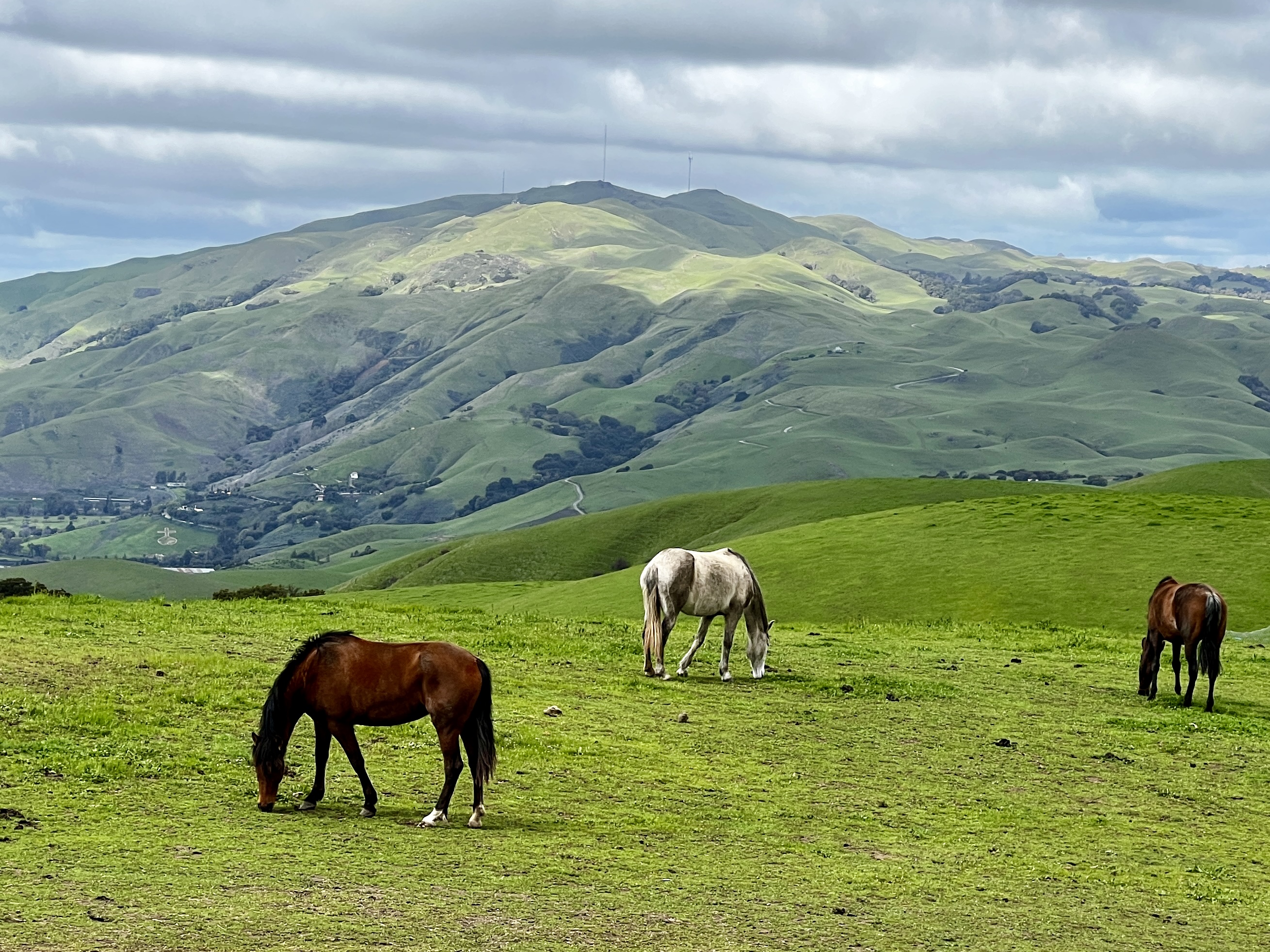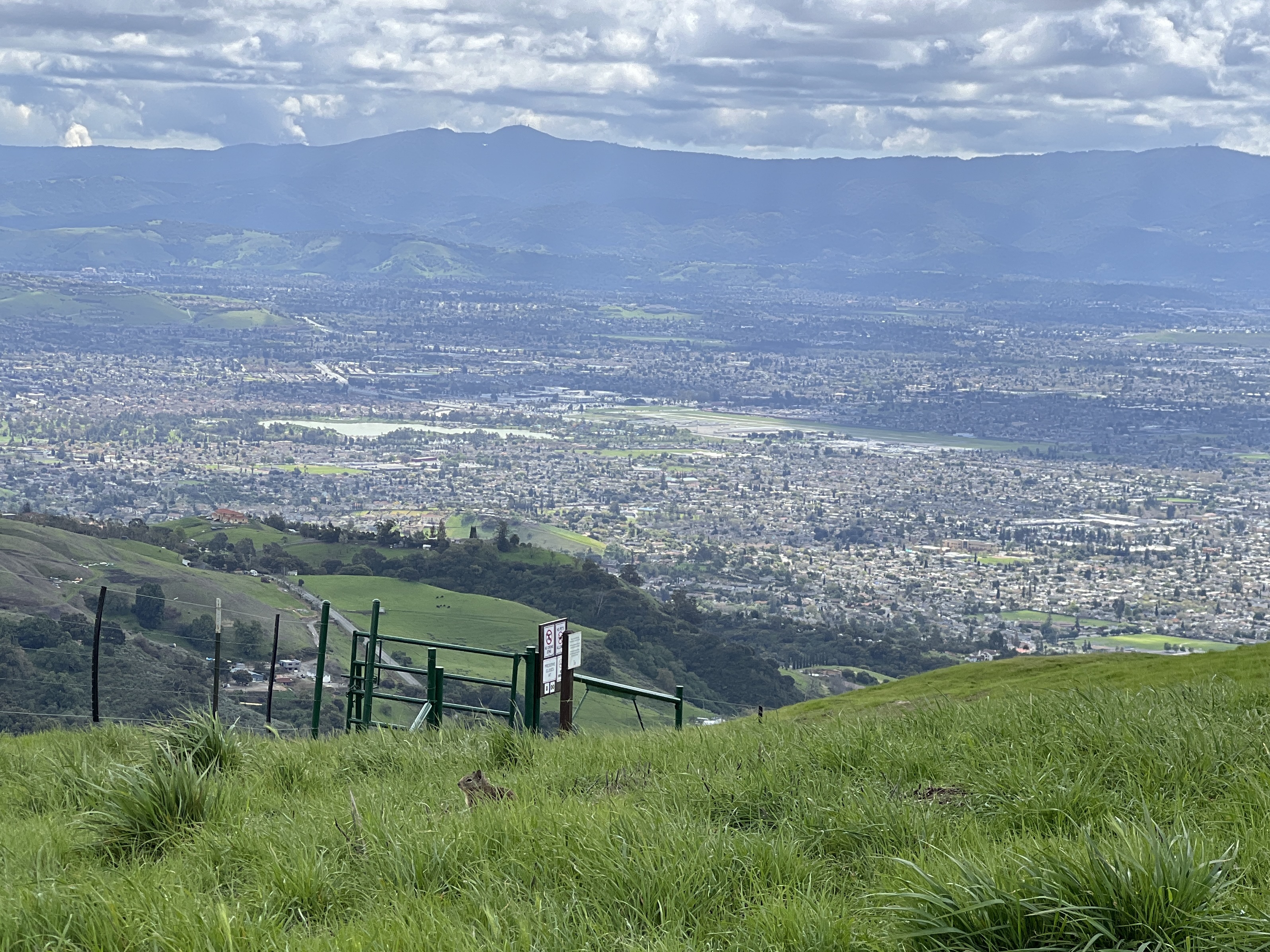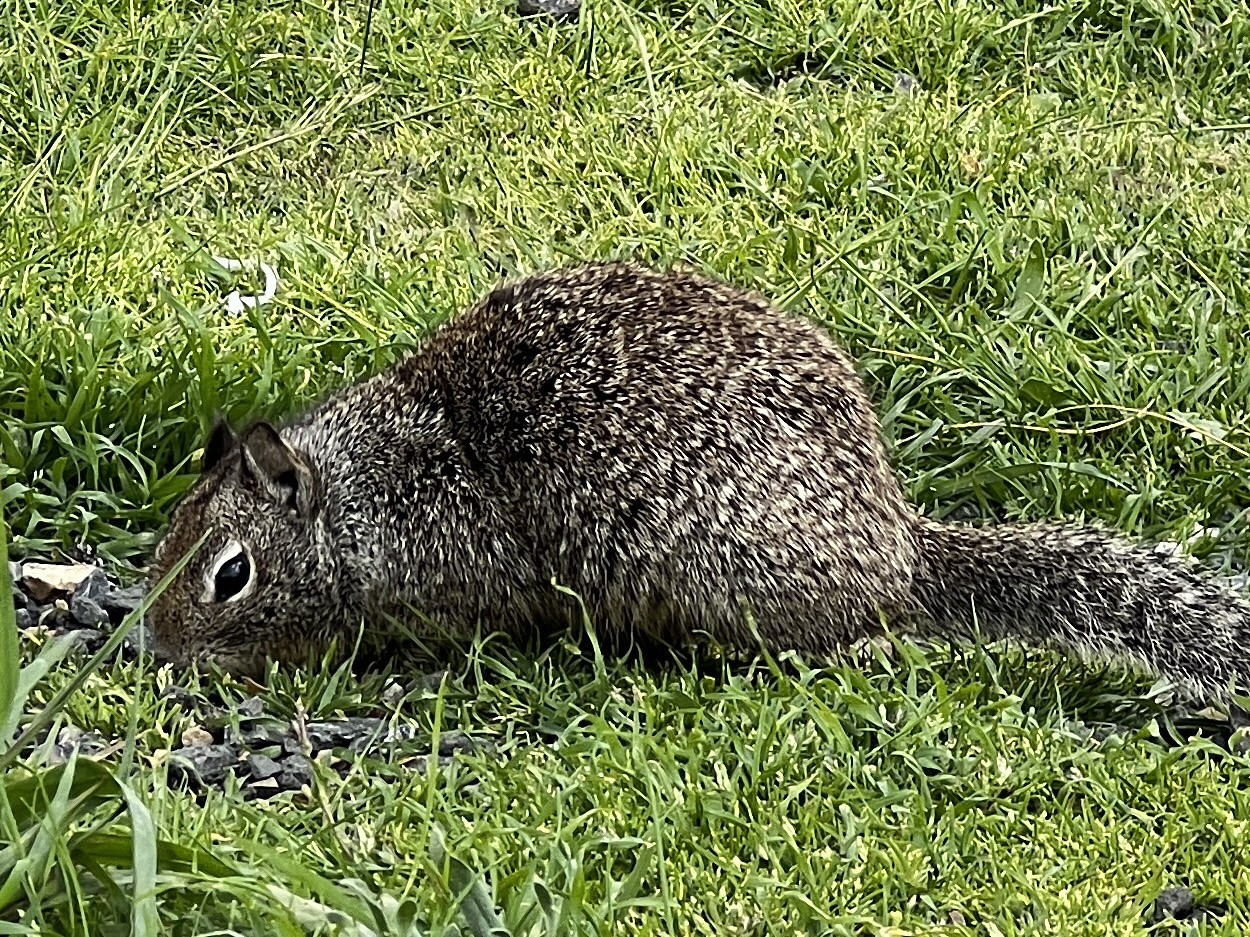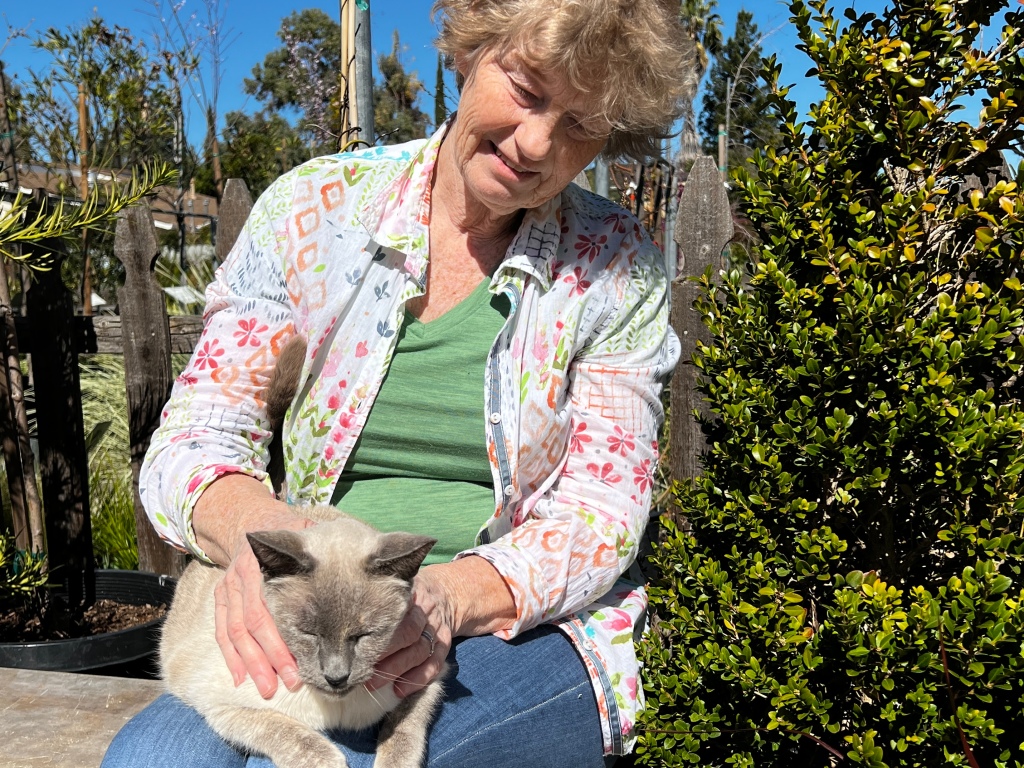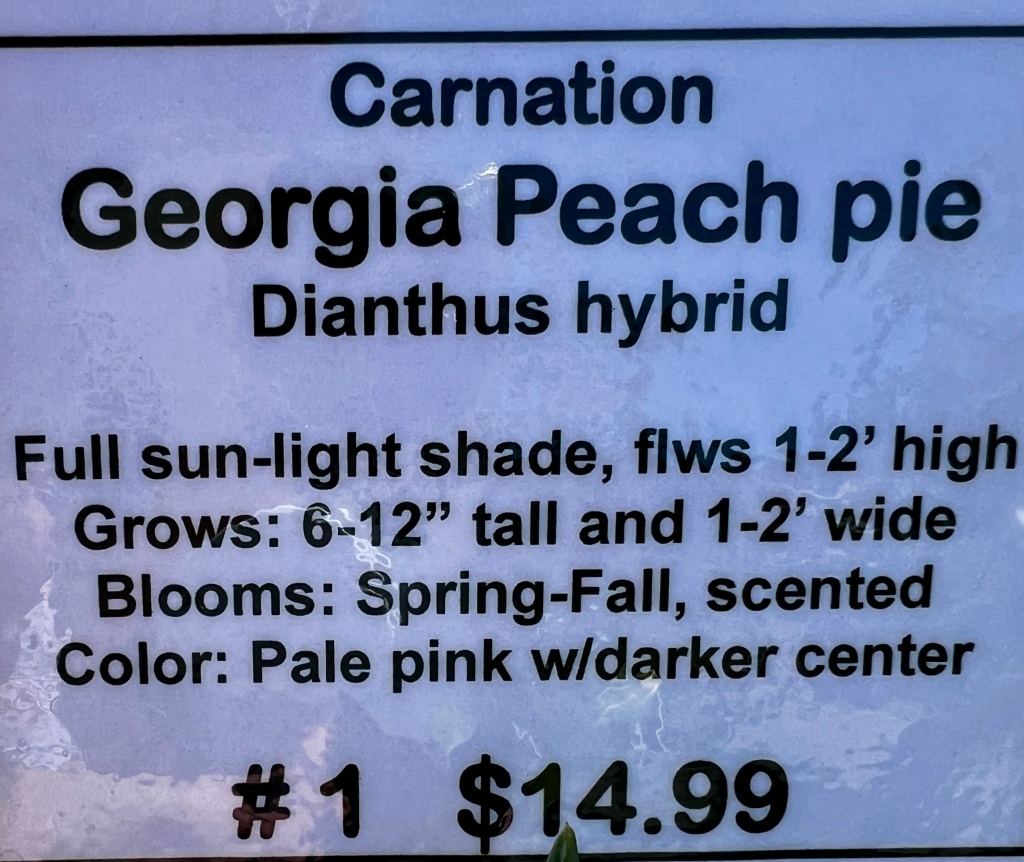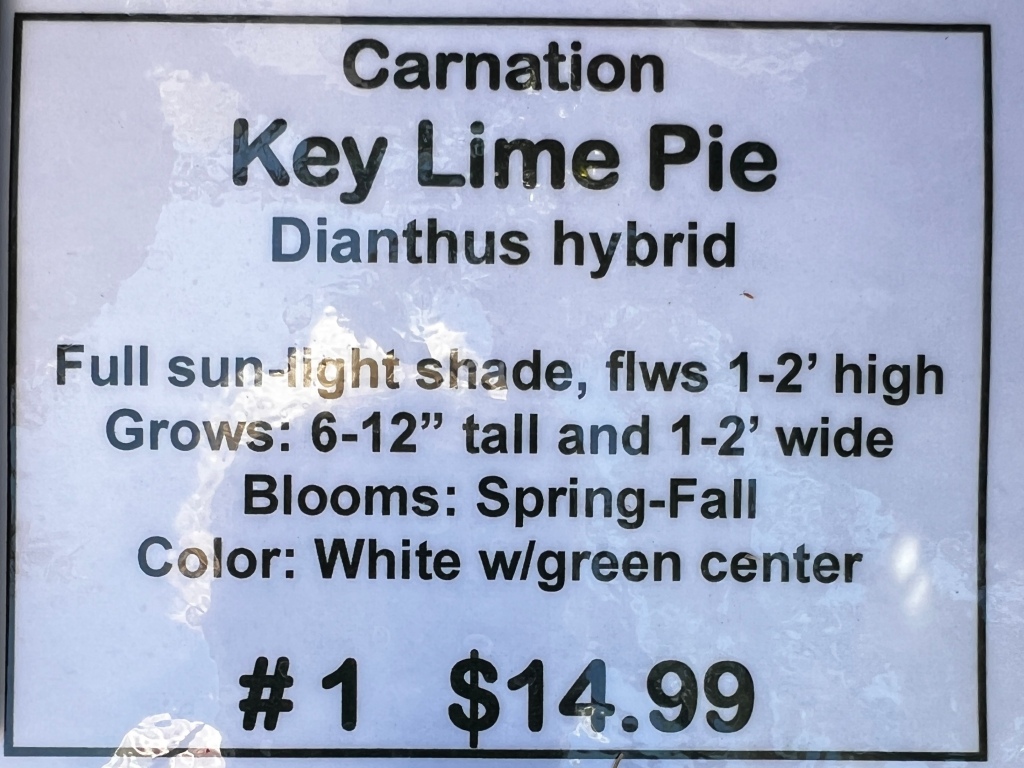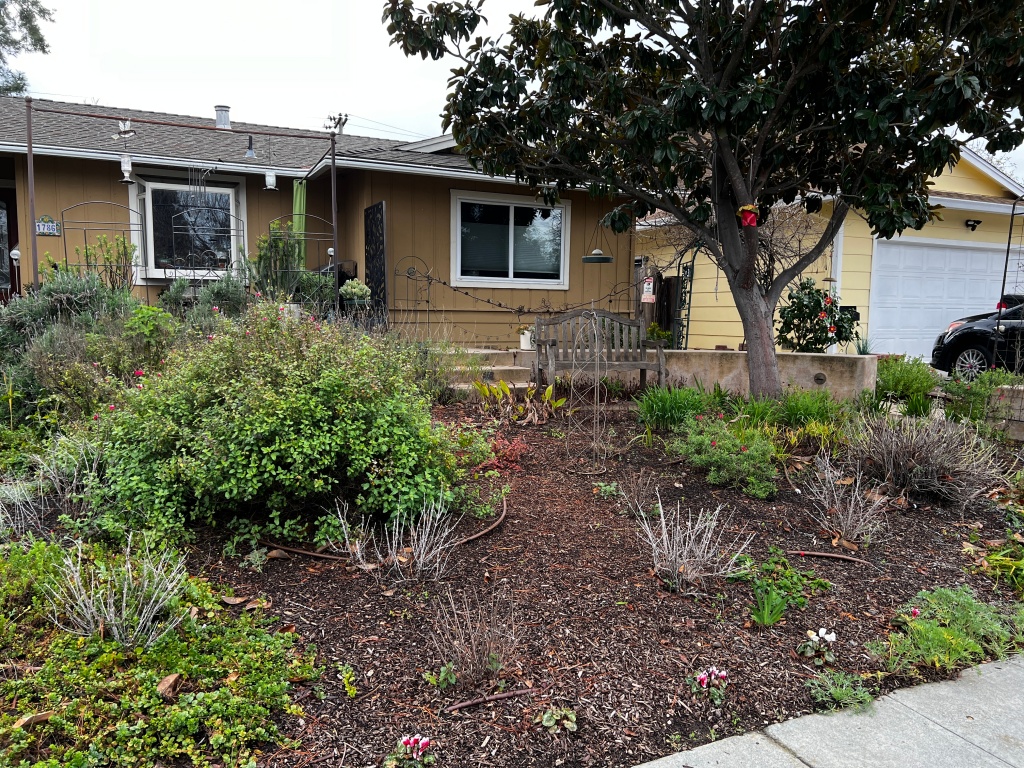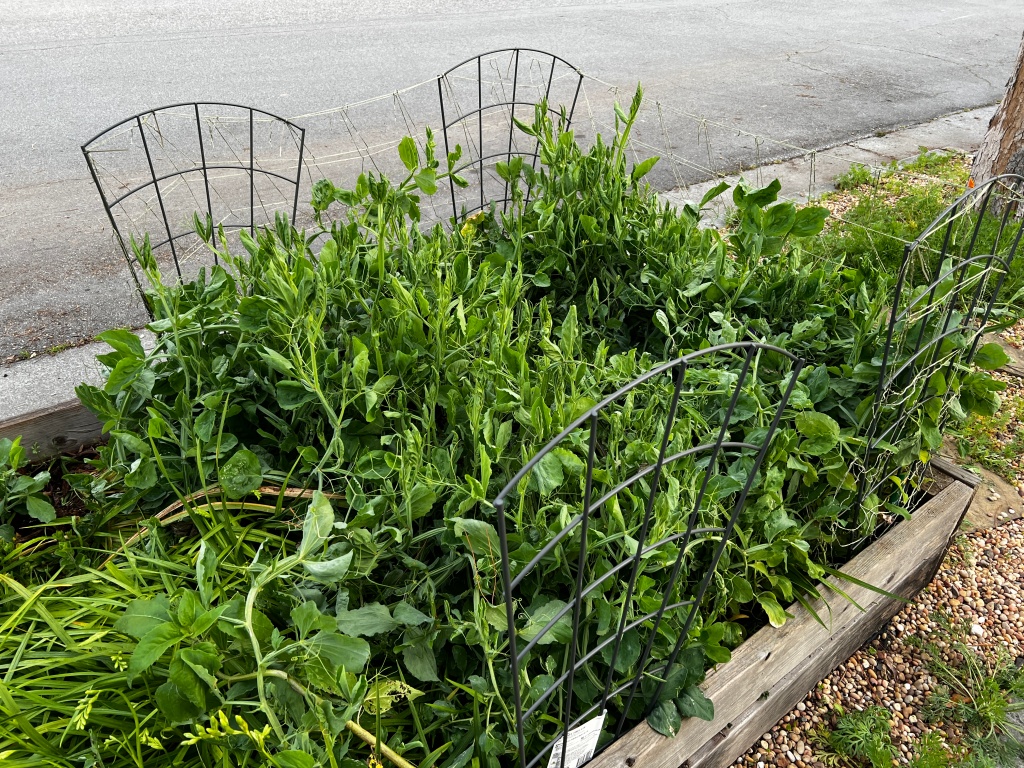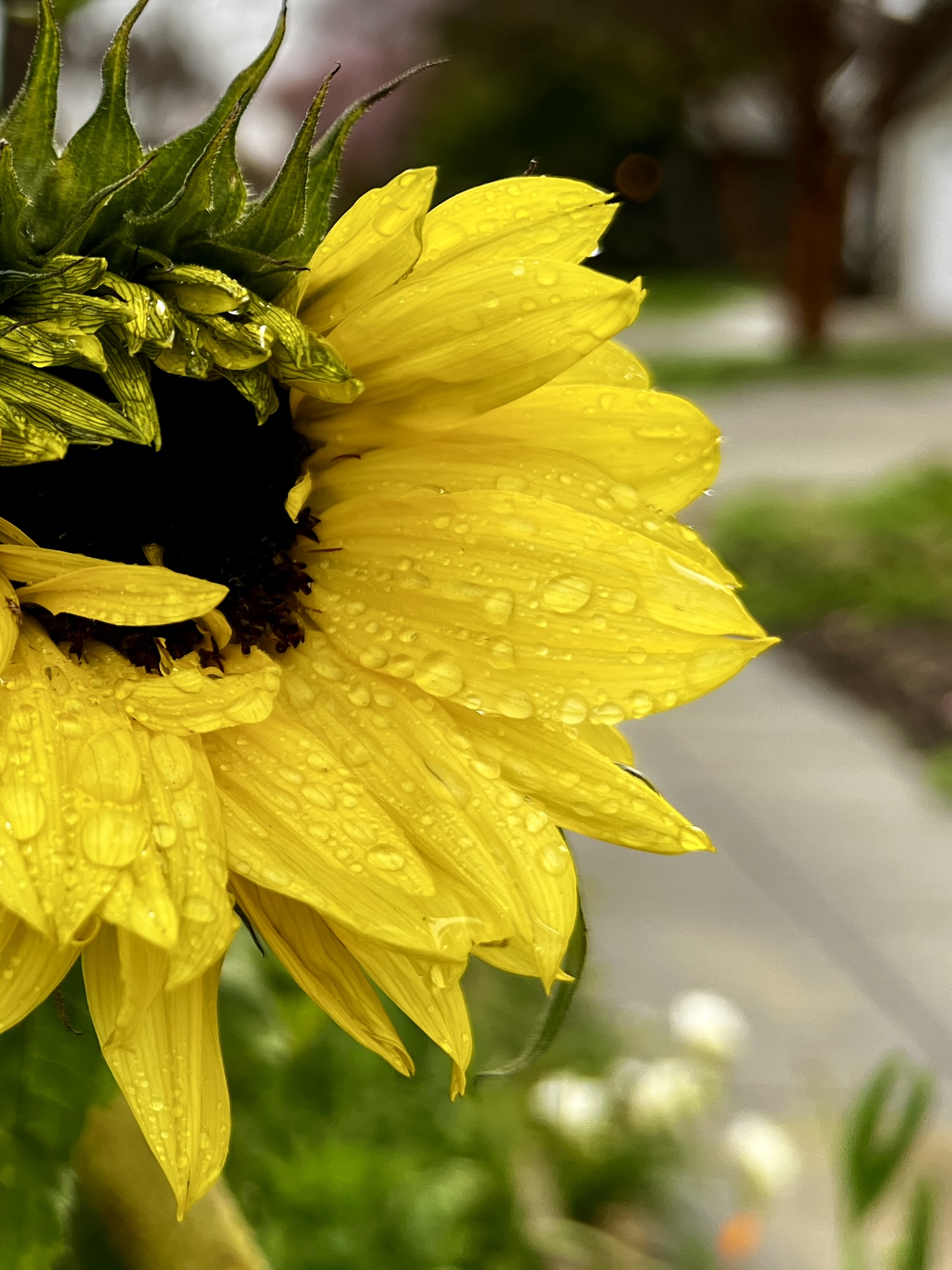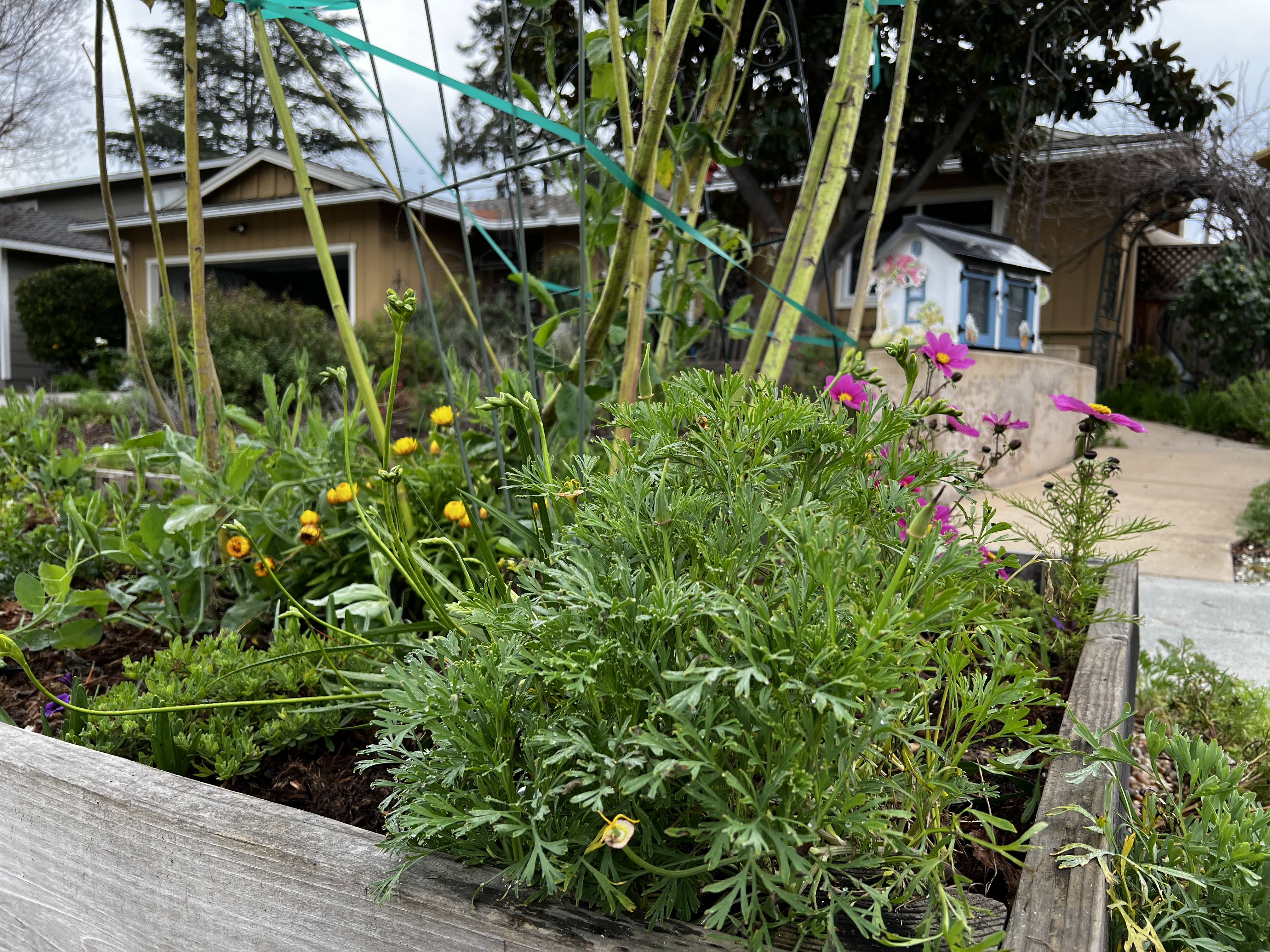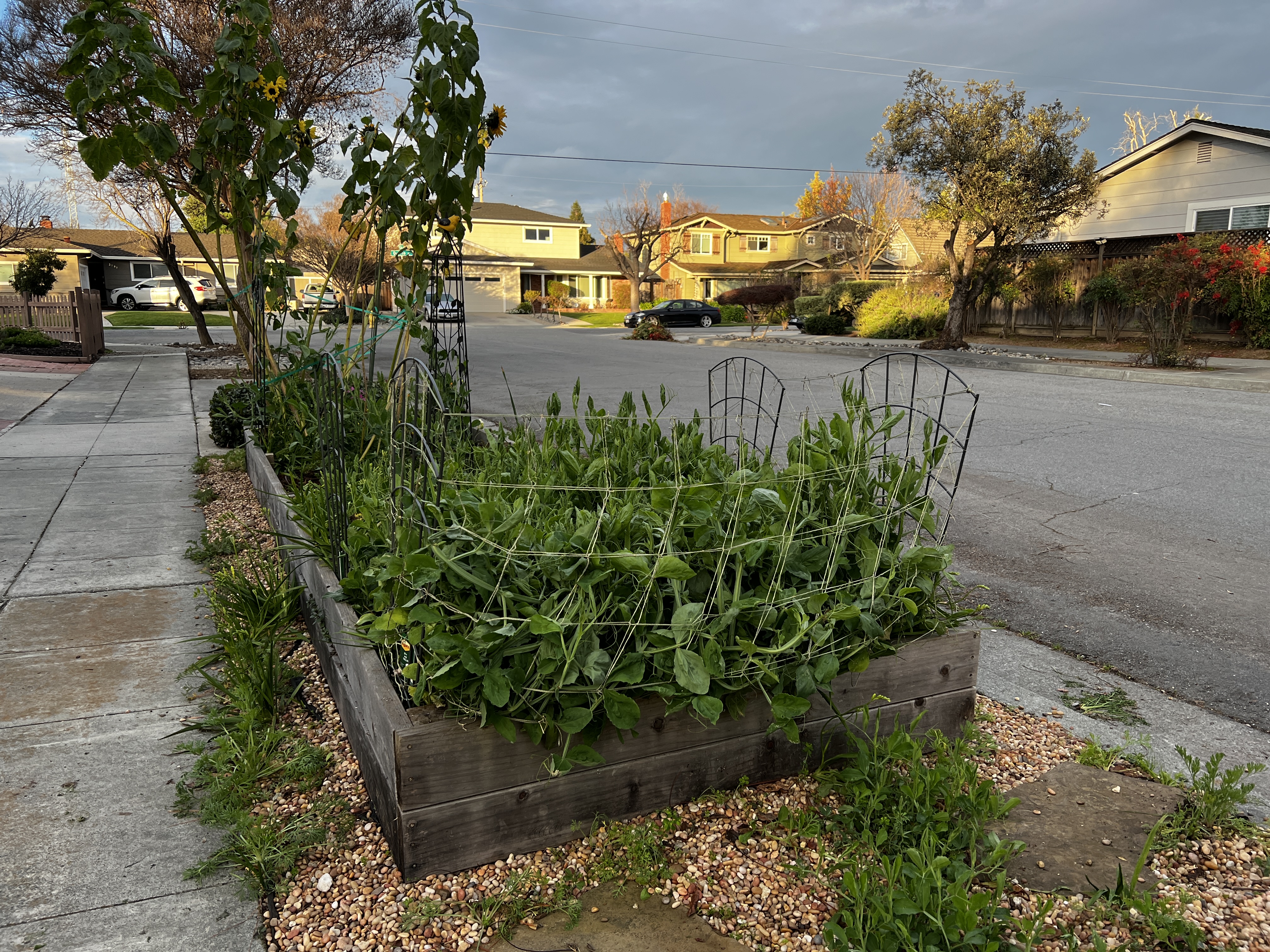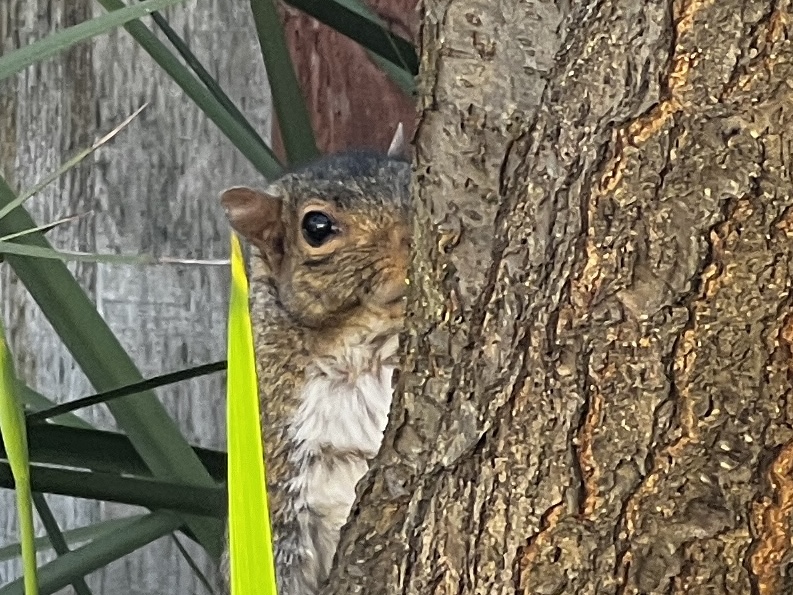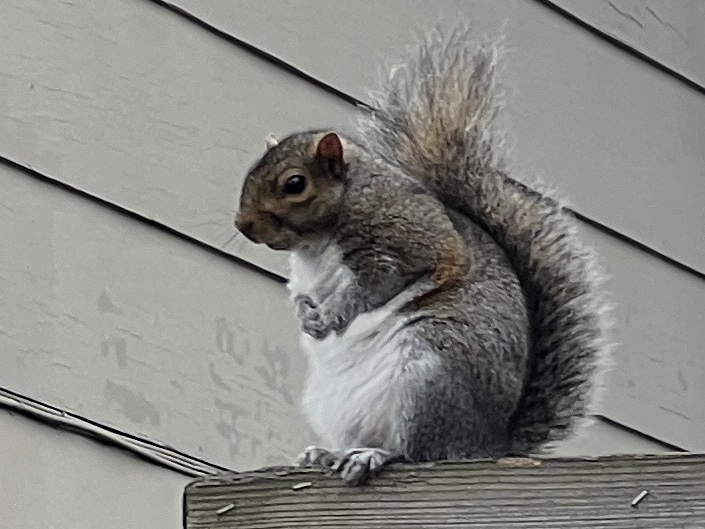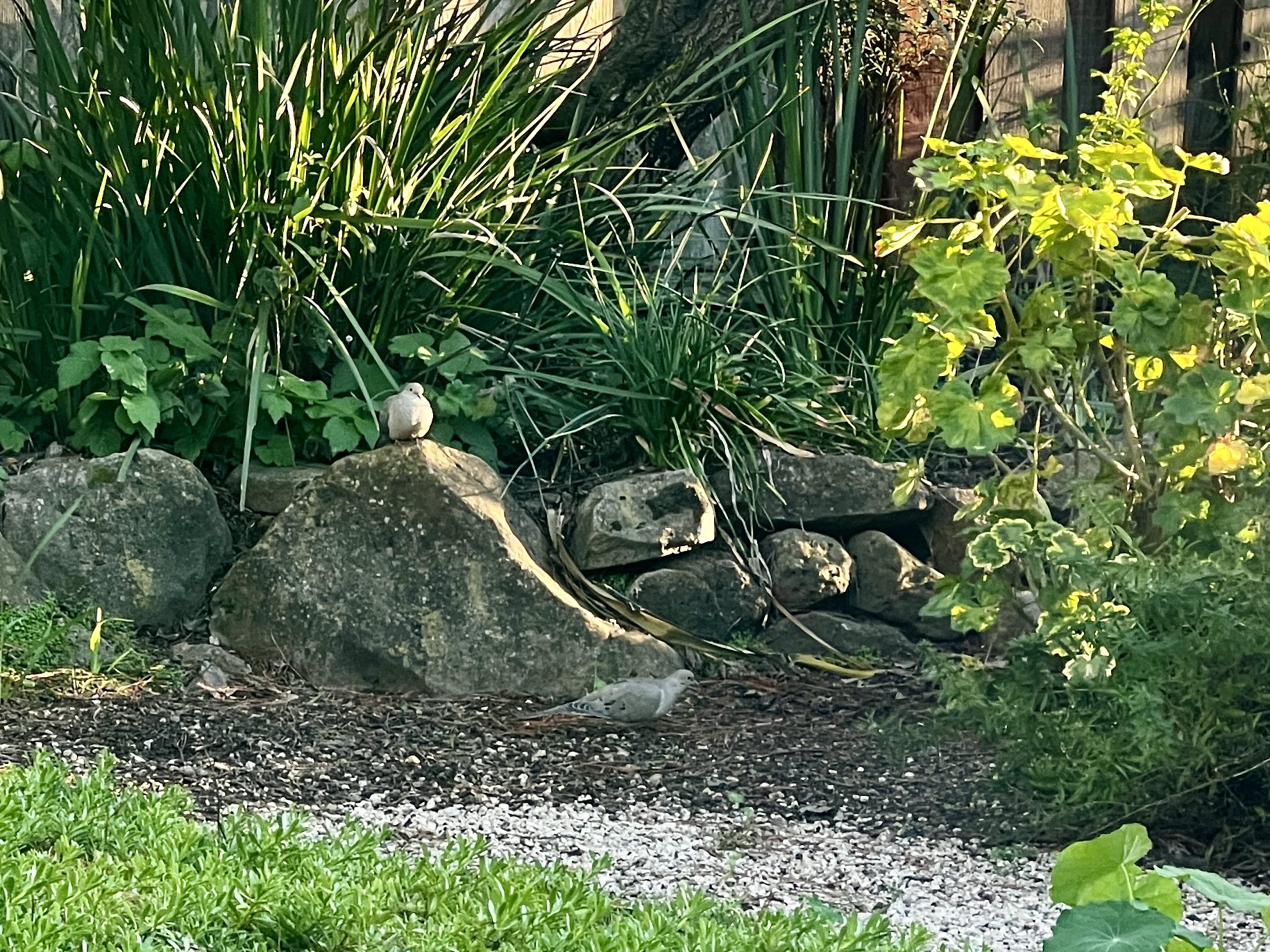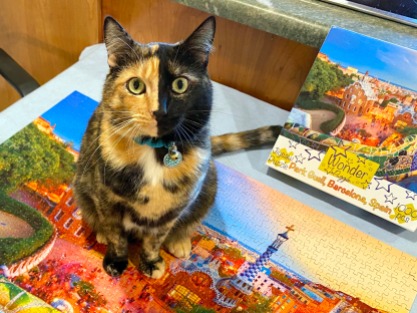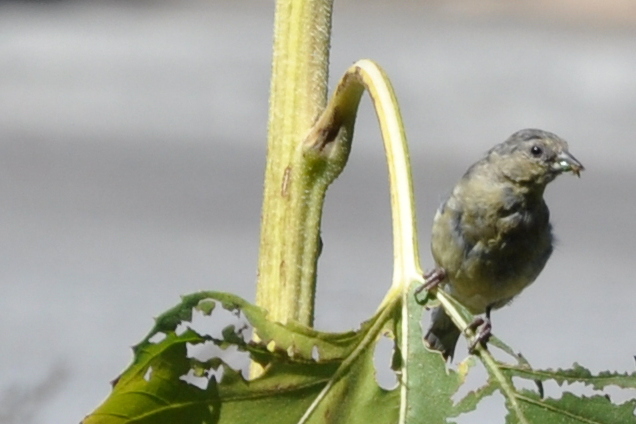Pine needles and paper wasps were not in the weekend plans.

Raked pine needles

Paper wasps
We were just sitting down to dinner when one of our regular Little Free Library patrons knocked on the door. She’d mentioned once before that she thought she saw yellow jackets, a more aggressive type of wasp, on the top of our Little Free Library (LFL).
I inspected the library and the surrounding areas at the time and didn’t see any activity. Perhaps they were just passing through.

Little Free Library, 2018
She spotted them again this weekend, hence the knock on the door. About a dozen wasps decided to hunker down on the roof of the LFL.

Paper wasp cluster on roof of LFL
We had an unusually windy day, but the sun was warm. They gathered in a cluster, barely moving, perhaps enjoying the sun. One or two flew out of the birdhouse portion of the library, but I had no way of seeing inside.
Our LFL is a work of art by artist Donna Pierre. I was reluctant to dismantle the birdhouse which is artfully attached to the larger library. That said, dozens of neighbors visit the library daily. I didn’t want anyone getting stung, least of all a small child.
After a brief debate on our plan of attack (ours, not the wasps) we trudged out to the garage in search of the auguring tool. Mike usually welcomes the chance to use his power tools, but it was the end of a busy weekend, after a week-long business trip to Mexico.
I said I would do it.

Moral support for the job at hand

Great for mosquitos and wasps, not so much for ants
Mike shouted encouragement and Chris took pictures (because I’m a blogger after all) while I donned a heavy leather jacket and gloves, drill at the ready. I wore my son’s mosquito hood from his back-packing days in case they all flew out at once. I drilled a large round hole in the back of the birdhouse, hoping they would fly out and be on their way. Once they exited, we could put a small screen over the front, return the removed piece from the back, and then call it a day.
As the augured piece fell into the birdhouse, imagine my surprise when a stream of ants came racing out of the birdhouse and down the back of the library. It was so unexpected.

Ants swarm out of the back of the LFL
Mike produced a flashlight so we could look up into the birdhouse through the larger hole. There it was: a nest filled with grey, honeycomb-like cells, with a few ants dotting the nest. That birdhouse had to go, at least for now.

Paper wasp nest inside birdhouse of LFL
Mike pried a few supports loose and we gingerly inched what is now a nesting box, out of it’s home.
The gathered cluster of wasps sat undisturbed on the roof as I carried the nest to the back garden and hung it high in a tree.

The augured hole
So how do pine needles factor in the title? After all that activity I was a bundle of energy and nerves. As I mentioned, the winds were fierce, knocking pine needles from our roof and the neighbor’s tree. I raked and swept and gathered them into a pile, occasionally checking on the relocated nest. Eventually the adrenaline wore off and we called it a day.

Pine needles rained down all day

Ready for compost pick-up
I would like to say, “Problem solved” but the wasps are back. They’re sitting in the same spot on the library roof, even though the nest is no longer there. I’m relieved to know via my search that our wasps are the docile kind, but when I look out the window and see people flailing their arms, it’s a worry.
After researching here: The difference between a yellow jacket wasp and a paper wasp
I decided to post a couple of signs saying:
Our flying visitors are European Paper Wasps (non-aggressive) vs Yellow Jacket wasps (which are aggressive). We relocated their nest, but a few of the adults are still hanging around.
These wasps are beneficial for the garden, which is probably why they are here.
If you’re concerned, please visit another Little Free Library in the neighborhood until they move along.
Thank you! Alys, Little Free Library Steward
Yellow Jacket vs Paper Wasp
What, then, is the difference between a yellow jacket and a paper wasp?
When it comes to appearance, both look similar. Both are black with yellow bands. A paper wasp, however, has a longer body than a yellow jacket, which has a shorter and fatter body. If you look closely, a paper wasp also has an orange-tipped antennae while a yellow jacket does not.
A yellow jacket is more aggressive and can sting repeatedly, while a paper wasp only attacks when threatened. Both feed on garden insects, but a yellow jacket scavenges for food and even feeds on food found in the trash or on picnic tables. A paper wasp, on the other hand, feeds on pollen and nectar as well.
Moreover, a yellow jacket builds its covered nest underground or in hollows, while a paper wasp build its coverless nests in a tree, eaves or spouts.
Source: DifferenceGuru
The research I did for this post also solved a mystery. I’ve mentioned wasps in the past, and noted that they never bother me. They make paper nests in the eaves, come and go without a fuss, and of course they do wonders for the garden. Yellow jackets and paper wasps look nearly identical unless you view them up close.
What I thought was a “pass” from the yellow jackets for providing an appealing garden smorgasbord was mere smugness on my part. It turns out that our garden visitors are their more docile cousins. May it always be so.

